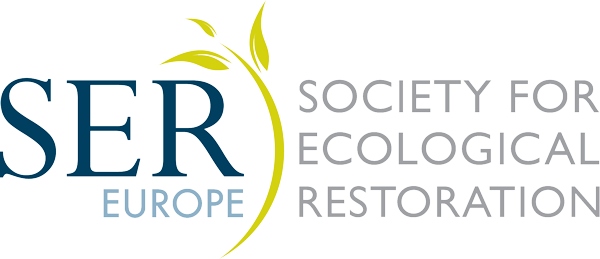Plenary speakers
We are happy to share the plenary speakers of SERE2024 conference here!
The information on this page is updated continuously.
FLORIAN CLAEYS

Florian Claeys is a policy officer at the European Commission's Directorate-General for the Environment, where he is one of those responsible for the Nature Restoration Law. After participating in the inter-institutional negotiations, he is currently dealing with implementation issues, including the development of national restoration plans and the establishment of monitoring and reporting arrangements. In addition, he is involved in the design of new financing instruments for biodiversity actions within the EU, as well as in strengthening the interconnections between EU climate and biodiversity policies.
Prior to this, he obtained a PhD in environmental sciences, investigating the impacts of climate change on forest management in Central Africa and the potential of market-based instruments to enhance the sustainability of forestry practices. He then worked for the French Ministry of Agriculture and Food Sovereignty, before joining the European Commission's Directorate-General for Climate Action. He has advanced experience at the crossroads of science, policy and diplomacy on the biodiversity-climate nexus, having participated in negotiations on the development and implementation of economic instruments and other public policies in favour of climate, biodiversity and sustainable land management.
The Nature Restoration Law, a new regulatory framework to restore European ecosystems for the benefit of people, biodiversity and climate
Despite conservation efforts under the Nature Directives, the state of nature in the European Union (EU) remains cause for concern. Indeed, over 80% of its habitats are in poor or bad conservation status. The loss of biodiversity exacerbates the vulnerability of EU populations and businesses to the increased impacts of climate change and natural disasters, thereby threatening the long-term continuity of vital ecosystem services.
In response to this situation, the EU has very recently adopted the Nature Restoration Law (NRL), now officially published as the Regulation (EU) 2024/1991. This legislation follows on from the European Green Deal and the EU Biodiversity Strategy for 2030, and builds on existing environmental legislation,
The NRL establishes a framework for Member States to put in place effective and area-based restoration measures that collectively cover at least 20% of the EU’s land and sea areas by 2030, and all ecosystems in need of restoration by 2050. In addition to the long-term and sustained recovery of biodiversity, the NRL’s general objective include to contribute to achieving EU climate objectives and to enhancing food security.
The NRL includes specific targets and obligations, with intermediate deadlines by 2030, 2040 and 2050 where appropriate, for the restoration of terrestrial, coastal and freshwater ecosystems, marine ecosystems, urban ecosystems, rivers and floodplains, pollinators populations, agricultural and forest ecosystems.
Member States will decide the specific measures they will put in within their respective territories. To this end, they will prepare national restoration plans which will detail the restoration needs and measures that ae tailored to the local context. These plans will establish synergies with climate change mitigation, adaptation and disaster prevention, as well as with agriculture and forestry. Stakeholders will be given early and effective opportunities to participate in the preparation of these plans. In order to fund nature restoration, Member States can mobilise necessary funding from public and private sources, including Union funding.
The NRL will help the EU and its Member States to meet their international commitments, including under the Kunming-Montreal Global Biodiversity Framework. The Commission is committed to collaborating with Member States and stakeholders to facilitate the implementation of the NRL.
ANNELY HOLM

Annely Holm is currently working in the Estonian University of Life Sciences as a project coordinator of LIFE programme project "LIFE Connecting Meadows". Annely has 15 year experience in heritage grassland restoration and management in Estonia. In 2014-2019 she worked as a project coordinator for the project "LIFE to alvars" that was chosen in 2022 by the European Commission as the best LIFE project carried out in the last 30 years. During the last 7 years she has developed a sustainable management system for the heritage grasslands in Western Estonian islands in cooperation with local farmers managing heritage grasslands.
Fascinating journey of restoring the species rich heritage grasslands and building up a sustainable management system in Western Estonian islands.
This journey started in 2014 with the large-scale alvar grassland restoration in Western-Estonia. In the frames of LIFE programme project “LIFE to alvars” we restored 2500 hectares of habitats within 5 years. . In 2020 follow up LIFE project "LIFE connecting meadows" started in Muhu island, Estonia. Need for this work was obvious- although the Estonian wooded meadows, alvars and coastal meadows have suffered large decrease in habitat area during past 60 years, most if the light demanding species are still present on sites as remnant populations, occurring on few remaining open spots on each site. However, eventually species richness will start to correspond to current, smaller and more fragmented habitat areas, which results in extinctions of currently present remnant populations. In addition to decreasing habitat area, the increasing isolation of remnant habitat patches have resulted in very low ecological connectivity - they are too far apart from each other to allow necessary seed dispersal between the sites. In order to turn this around – we needed large-scale restoration effort.
This rapid increase in the restoration demanded participation of landowners, farmers and increase in the numbers of grazing animals. It became clear that in order to provide sustainable management of these sites the system around it also needed to develop. The main issue arising was slaughtering, products and marketing of the meat produced on the heritage grasslands. As a spin-off of the project farmers’ coop, “Muhu island meat” was formed in 2017. Coop brings together farmers managing the restored heritage grasslands with sheep and cattle. Aim of the coop is to organize the slaughtering, produce making and marketing of the coop members but also for the heritage grassland farmers from outside the coop. This supporting system is vital in keeping the heritage grasslands in favourable condition and providing income for the farmers.
VILJAR ILVES
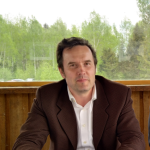
Viljar Ilves is one of the few local residents of the Alam-Pedja region and has been connected to the area for over 30 years. For 9 years he has been dedicated to heritage meadow management. In 2021, he was one of the three laureates of heritage meadow managers. He aims to provide on par living conditions to Scottish Highland Cattle, take care of floodplain meadows as well as possible and manage the areas sustainably. Viljar enthusiastically cooperates with scientists researching the natural heritage of protected areas. He has participated in several ornithological and botanical field work sessions and know the biota in his region very well. In order to ensure the best results, he is a practitioner as well as an active participant in discussions and meetings. He coined the slogan “Let’s make Alam-Pedja great again!”.
MARKO KOHV
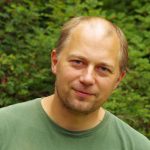
Marko Kohv is a Research Fellow at the University of Tartu and Director of the Estonian Wetland Society. Since 2007, he has been one of a leading practitioner in Estonian wetland restoration, contributing to both state-wide and local projects in wetland restoration planning, implementation, and monitoring. He played a key role in the LIFE Mires Estonia project, which won the European The best Natura 2000 Conservation on land project award in 2024. His research interests include wetland resilience, hydrology, ecology, geology, wetland restoration planning, and innovative monitoring systems like IoT solutions and unmanned vehicles.
Marko is also a passionate advocate for wetland conservation, having published numerous popular science articles in various newspapers and journals. He has organized multiple wetland symposiums, made several movies and appeared on various TV shows to educate the public about wetlands and their restoration. If the conversation is about wetlands and their restoration in Estonia, you can quite safely bet that journalists will be reaching out to him.
Restoring Estonia's Peatlands: A Journey from Past Practices to Future Prospects
This presentation provides an overview of peatland restoration practices in Estonia from the 1980s to the present, with a forward-looking perspective on near-future challenges and opportunities. Estonian peatlands, once extensively drained for agriculture and forestry, are now the focus of diverse restoration efforts aimed at reversing ecological damage and enhancing biodiversity.
We begin by exploring the initial ad hoc restoration attempts in the 1970s. These early efforts were often unsuccessful due to inadequate designs and materials but set the stage for more structured interventions. By the 2010s broader initiatives in protected areas and abandoned peat extraction sites saw entire drainage systems closed, marking a significant shift toward large-scale restoration. Experimental work in forestry-drained peatlands involving tree cover manipulations and moss layer transfer efforts in peat extraction fields in the 2010s offered new insights into the challenges and development paths after the implementation of restoration measures. Combining elements of local heritage enabled new pathways to engage with local communities, and a dedicated push for high-quality educational materials led to heightened awareness about peatland restoration.
Despite notable successes, challenges persist. The reliance on EU funding, the controversy over forest response to change of hydrology, and limited long-term monitoring are areas of concern. I will discuss the impact of recent policy changes on local practices and emphasize the urgent need for a comprehensive monitoring strategy that includes remote sensing and citizen science observations.
By analyzing the strengths and weaknesses of Estonia's approach to peatland restoration, this talk aims to outline a robust framework for future restoration projects that not only address ecological and carbon sequestration goals but also integrate cultural heritage and broader ecosystem services, hopefully ensuring a sustainable and resilient return of the wet landscapes.
JONNE KOTTA
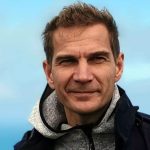
Jonne Kotta is an active member of many of the world's leading research communities, specialising in disciplines such as the ecology of marine algae and benthic invertebrates, species interactions, spatial modelling, alien species, and linking ecosystem functioning to services, the bio-economy and climate change. His work bridges theoretical science with practical management through various modelling techniques. He is currently developing regional web-based spatial decision support tools to promote the blue bioeconomy (e.g. algae, mussel farming and multi-purpose solutions), support mitigation processes (e.g. assessing cumulative impacts of management scenarios, quantifying habitat restoration potential) and improve marine management and maritime spatial planning decisions. This expertise is essential for current management plans and is likely to lead to clearer visions and strategies for the future.
Blueprint for a healthy Baltic Sea: Assessing the current state and solutions for ecological improvement
Jonne Kotta, Antonio Aguera Garcia, Ilja Maljutenko, Ants Kaasik, Mihhail Fetissov, Øivind Strand, Morten Skogen
The diversification and intensification of human activities in marine environments are significantly impacting valuable habitats, necessitating improved planning and scenario calculations. Current digital tools that predict the environmental impacts of human activities are primitive and rely heavily on expert opinion. In our era of big data, it is crucial to shift to data-driven models to map human impacts within complex ecosystems, aiding in habitat restoration and improvement.
One effective solution is an environmental digital twin for dynamic impact assessments, exploiting open-access mapping resources to address data scarcity and quality challenges. AI-based tools can extract knowledge and numerical evidence from scientific papers to assess human impacts. A web-based, open-access digital twin allows users to define sustainable developmental paths, reduce cumulative environmental impacts, improve habitat recovery, and empower the blue bioeconomy, enhancing environmental health and socio-economic benefits.
As a case study, we demonstrate the potential of low trophic aquaculture as a nature-based solution for nutrient sequestration in the Baltic Sea, addressing eutrophication challenges. Traditional nutrient management strategies are insufficient, and innovative solutions are needed. Despite the benefits, such aquaculture systems are limited by a lack of robust assessment tools. Our research uses environmental data from a pioneering farm integrating native drifting brown seaweed, Fucus vesiculosus, and blue mussel, Mytilus trossulus, in the Baltic Sea's low salinity waters. By incorporating Dynamic Energy Budget models within a 3D hydrodynamic framework, our farm model assesses the sequestration capabilities of these low-trophic species, showing significant improvements in water clarity and habitat restoration.
Integrating this farm model with a fish farming model demonstrates the viability of net-zero emission fish farming systems, promising better coastal water quality and sustainable food production. Our results advocate for wider adoption of low-trophic, multiple-use farming solutions in the Baltic Sea and similar environments, highlighting innovative aquaculture's critical role in addressing environmental challenges.
JENS-CHRISTIAN SVENNING
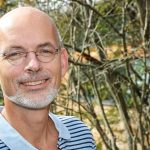
Jens-Christian Svenning is an ecologist and biogeographer, and a Professor at the Department of Biology at Aarhus University, Denmark where he also serves as the Director of DNRF Center for Ecological Dynamics in a Novel Biosphere (ECONOVO; https://econovo.au.dk/). Alongside basic curiosity about nature, Jens-Christian Svenning is highly motivated to contribute to help overcome the climate and biodiversity crises and promote sustainable societal development. His research includes strong foci on fundamental drivers of biodiversity, climate change impacts on biodiversity and ecosystems, human-nature interactions from the past to the future, and the rising emergence of novel ecosystems, with strong interest in fundamental issues such as disequilibrium dynamics and top-down trophic effects. Key applied research foci include predictive modelling, the application of informatics and space-borne and other remote sensing technology to ecological and sustainability research, human dependence on and benefits from nature, and rewilding as a promising approach to ecosystem restoration under global change.
Trophic rewilding as a restoration approach under emerging novel biosphere conditions
The emergence of unprecedented biosphere conditions and urgent biodiversity and climate crises demand innovative actions for ecosystem recovery. Trophic rewilding, an ecological restoration strategy, uses species introductions to reestablish top-down trophic interactions to foster self-regulating, biodiverse ecosystems. This presentation examines the basis of trophic rewilding, highlighting macro- and paleoecological studies that reveal the critical role of megafauna in ecosystem functionality and biodiversity maintenance, especially through herbivory, propagule dispersal, and nutrient cycling. Historically, megafauna had high functional diversity and abundance, which enhanced vegetation diversity, a key facilitator of overall biodiversity. Current research on rewilding projects shows that these functions can be successfully restored. As biosphere conditions change, these functions will be increasingly important for maintaining biodiversity. Trophic rewilding has significant potential for upscaling through the growth and expansion of wild animal populations; further, non-native megafauna can act as surrogates for extinct species to enhance functionality. It can aid biotic adaptation to climate change, increase resilience against ecosystem collapse, and reduce the impact of invasive alien plants. These insights emphasize the need to restore large areas with higher megafauna densities and diversities, as a crucial part of enhanced conservation and restoration efforts.
CATRIN WESTPHAL
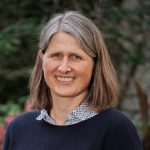
Catrin Westphal is professor for Functional Agrobiodiversity & Agroecology at the University of Göttingen, Germany. Her current research focuses on the development of effective agri-environmental measures and biodiversity conservation, such as organic farming and mixed cropping at the field and landscape scale as well as habitat and landscape restoration. She studies food webs in temperate and tropical agroecosystems, including oil palm and macadamia plantations, and diversified crop rotations with grain legumes. To assess agrobiodiversity, ecosystem functions and services provided by functionally relevant taxa, she uses novel experimental designs, such as landscape-scale experiments. Catrin Westphal is member of the Göttingen Academy of Sciences and Humanities, the nature conservation advisory board of the regional Ecological Station and also member of the Biodiversity Museum of Göttingen.
Enhancing biodiversity in agroecosystems: Local and landscape-scale restoration strategies
The EU Nature Directive requires that 30% of ecosystems be restored to good status by 2030, including improving biodiversity in agroecosystems. In particular, pollinators, which thrive in open, flower-rich environments, play a crucial role in agroecosystems by providing essential pollination services. In this presentation I will explore how local and landscape scale practices can contribute to the restoration of agricultural landscapes. I will focus on sustainable agricultural practices that integrate ecosystem restoration. Key strategies include crop diversification at both local and landscape scales, enhancing landscape heterogeneity to counteract biotic homogenization, and using participatory approaches to align agricultural practices with landscape restoration goals. These approaches ensure that the needs and knowledge of local communities are taken into account, ultimately improving the long-term sustainability of restoration efforts.
